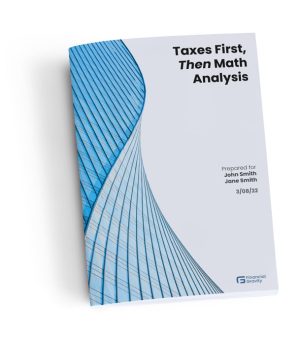Investing is Fraught with Stress
To say there’s a lot on the line for American investors is an epic understatement. Most Americans face their financial future with little to no training or orientation, but just about everyone shares common concerns: How about your health and welfare in old age? Will you be able to afford the shockingly expensive nightmare that is memory care? What will your spouse do without you? Will you be able to help your kids and grandchildren if they need it? Just how golden are your golden years going to be?
Simply reading that first paragraph can trigger stress hormones in many people. The uncertainty about the future and lack of control make a powerful emotional cocktail. When we move from the intellectual to the practical—when the market crashes and all the news is dire—the flood of adrenaline, norepinephrine, and cortisol affects our bodies in powerful ways.
The result of this rush of hormones is called acute stress response, or ASR. In animals (and that includes humans), the purpose of the ASR is to prepare the body for action. Temperature goes up, as does heart rate, pupils dilate, and blood flow to the large muscles increases. We’re being prepared to fight or flee as if our lives depend on it. In nature, they do, and have for all of human history. In investing, the results can be catastrophic.
For investors, fight or flight can be thought of as two extreme reactions. For some investors, the fight response could be to double down, known among investors as The Martingale Strategy. This is a risk-loving system based on the idea that you cannot lose every bet. The idea is to immediately double the size of a bet after experiencing a loss.
Say you’re at the roulette table, and you observe that red has come up four times in a row. You’re thinking, “What are the odds of red coming up five times in a row?” But in reality, this is a specious question: the coming bet is only a single trial; the odds of red or black are the same on every turn of the wheel.
You make your first bet of $1,000 and lose, so your next bet is $2,000. By your sixth consecutive loss, you’ve not just lost the $32,000 on that bet, but cumulatively, you’re down $63,000. In the unlikely, but not impossible, event that you lose ten consecutive bets, you’d be down $1,023,000. As many gamblers will tell you, you can run out of money before your luck turns.
The day trader is a practical example of a fighter. For many readers, “day trader” will seem an archaic term for the simple reason that day trading typically ends very badly. According to the Data Science Society, “Approximately 1–20% of day traders actually profit from their endeavors. Exceptionally few day traders ever generate returns that are even close to worthwhile. This means that between 80 and 99 percent of them fail.”
Maybe outrunning that saber-toothed tiger is not such a sound strategy. Our other extreme option, flight, isn’t much better, as it turns out. In the world of investing, flight means selling, abandoning your strategy, and going to cash or some other so-called safe haven, like gold. All too often, stress selling happens after the worst of the market action has already happened, locking in the “sell low” half of the failure equation.
Another term for stress selling is market timing. The consulting firm DALBAR has determined that market timing is the principal cause of investor underperformance. A study by the firm found that during the 30-year period between 1987 and 2016, the S&P 500 produced an average annual return of 10.2%. However, the average return of the American retail investor during that period was just 2.6%.
Those return figures are called nominal, meaning before inflation. The real return of the average investor over those three decades was very close to zero.
Stories of investor failure are all too common. The legendary fund manager Peter Lynch produced an average annual return of 29% during his tenure at the Magellan Fund (1977 – 1990). However, the average investor in the Magellan Fund had a negative return.
Making a negative return requires a deadly combination of both fight and flight. After all, the investor also needed to buy high, which is essentially a fight response. In the case of Magellan, investors waited until they were sure that the fund was flying high, a “sure thing,” also known as confirmation bias.
So, what does all this have to do with mutual funds? More than you might think. First of all, those 30-year DALBAR results were for equity fund investors, and Magellan was also an equity fund. If you were to pick any American equity fund, there is an 82% likelihood that it has underperformed the S&P 500 over the past 10 years. That rises to 87% over 15 years. Some of the average American’s underperformance was simply due to the fact that they invested with mutual funds, instead of index funds.
Mutual Funds Make a Stressful Thing More Stressful
There are many reasons why mutual funds underperform. Chief among these are inherent costs, lack of conviction, and near-zero transparency. We recommend you review Financial Gravity’s whitepaper, Mutual Funds: High Costs for Long Odds. That whitepaper can arm you with vital information about mutual funds and can recommend strategies that would likely work better for many families.
A lack of transparency can cause all kinds of problems. It can be extremely difficult to stay the course when you don’t know what your fund manager is doing, and you don’t know what the holdings are. The regulations that govern mutual funds assure that you cannot know these things, except for in quarterly disclosures, which can be out of date by the time you read them. According to the Seven Pillars Institute, mutual funds’ “opacity encourages information asymmetries and engenders substantial distrust and risk.”
It’s ironic, given the high costs, underperformance, and lack of transparency, that the total assets in mutual funds registered in the United States amount to $22.1 trillion. That is a staggering amount of money, nearly as much as the total value of all commercial real estate in America, projected to reach $24.7 trillion this year.
It’s particularly ironic because there are alternatives that are much lower cost, do not have underperformance problems, and are completely transparent. Those alternatives are exchange-traded funds, or ETFs. ETFs can be obtained that produce a virtually identical return of the S&P 500 for less than 1/20th of 1% expense ratio.
Think about the real effects of making this change: the stress of underperformance is removed. The stress of not knowing what you own is eliminated. The stress of possibly paying taxes on gains you did not enjoy is no longer on the table. Those are all negatives, but there are positives, too, such as the certainty of market-like returns and the knowledge that you are investing the way institutions and the wealthiest families do.
More than likely, you were sold your mutual funds by a commission-based broker, not a fee-based, registered investment advisor. The broker’s incentive is achieved when the sale is made, no matter what your outcomes are. The fee-based advisor’s incentive, however, will be a function of how well you do over time.
Even if you make the transition from mutual funds to ETFs entirely on your own, you should benefit from lower costs, greater tax efficiency, and greater transparency. We suggest that you may do even better to get the advice of a true fiduciary who can help you structure your holdings using asset location, where the first goal is maximizing your after-tax compounding. Putting tax decisions first is another thing the wealthiest families do.
You may also benefit from the experience and access that a fiduciary advisor can provide. Seek a professional who will be transparent about all costs, work to minimize your tax bill, diversify the real-life risks your family faces, and can communicate clearly what your risk exposures are. Again, these are practices of the ultra-rich, and we suggest if you do what they do, you’re likely to enjoy the same results.
Once upon a time, mutual funds were a powerful innovation that gave everyday Americans access to stock and bond investing with full-time professionals and with modest amounts of money. Today, every benefit of mutual funds can be had with none of their inherent flaws.









